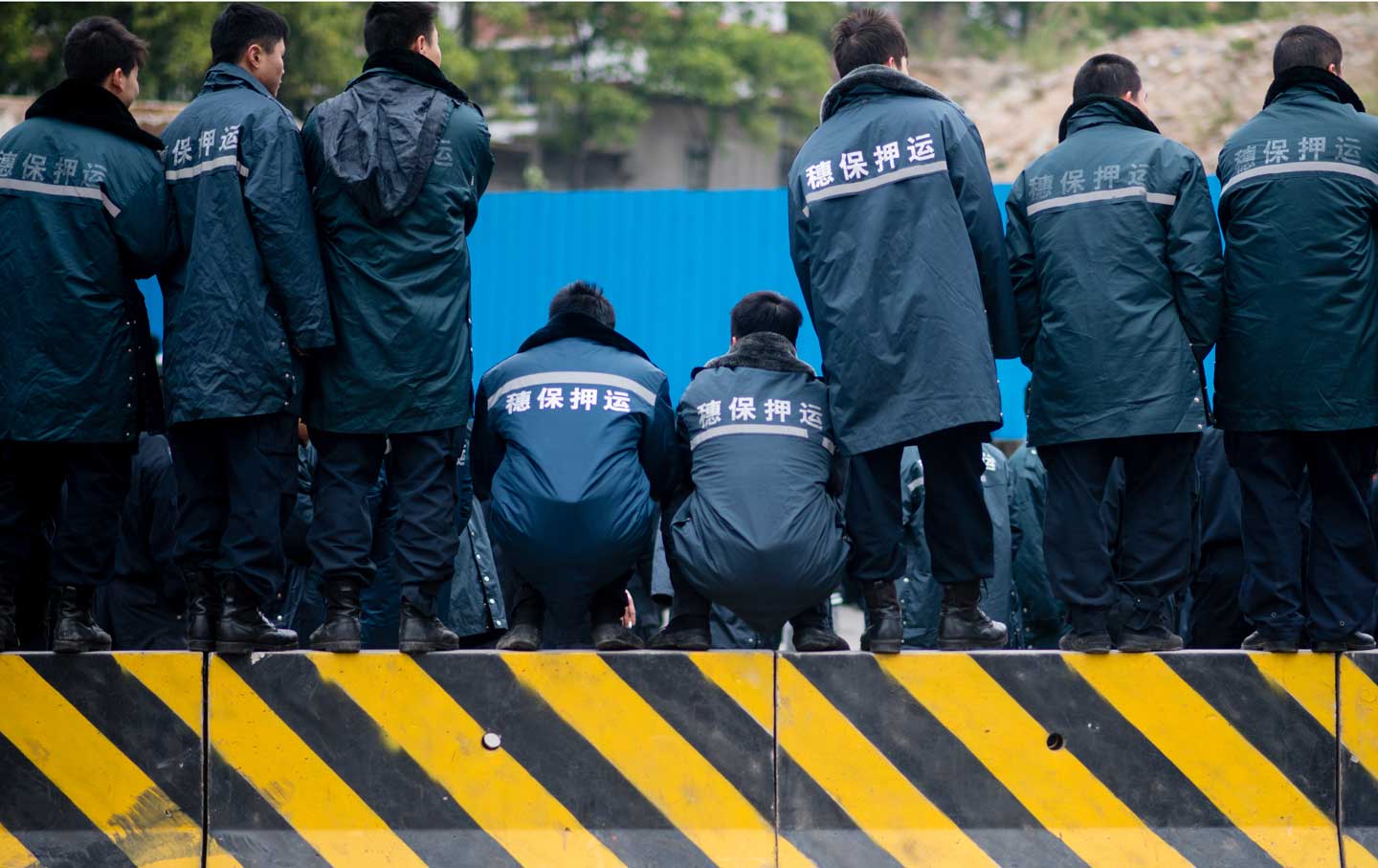n an unprecedented crackdown on some of China’s most effective independent labor organizations, known as worker centers, seven worker-activists have been detained and held virtually incommunicado in detention facilities in Foshan and Guangzhou.
The detainees include Panyu Dagongzu Service Center staffers Zeng Feiyang and Zhu Xiaomei; former Dagongzu staffers Tang Jian (a k a Beiguo) and Meng Han; Peng Jiayong of the Panyu-based Laborer Mutual Aid Group; He Xiaobo, director of Foshan Nanfeiyan Social Work Services Organization; and Deng Xiaoming of the Haige Workers Center. Beiguo reportedly remains detained, but his whereabouts are unconfirmed as of December 16.
[…] While the government remains mum on the detentions, the police sweep seems an unusually harsh crackdown on community-based groups that have long struggled to balance mutual aid and advocacy without courting controversy. Working outside the international spotlight and concentrated in China’s gritty southern manufacturing belt, organizers toil thanklessly each day on behalf of local workers: filing complaints, winning back wages, fostering collective bargaining, and occasionally mediating strikes and other workplace conflicts.
[…] Coinciding with wider crackdowns on journalists and activist lawyers, the detentions might signal an effort to tighten the government’s stranglehold on civil society. One veteran labor activist, commenting anonymously on a Hong Kong commentary site, explained that “the raids were well planned from a higher level of government,” and that facing an economic slump, by targeting activists who were “promoting a positive attitude to the workers’ collective bargaining,” the government was actively suppressing “the legitimate aspirations of workers.” [Source]
Authorities have justified their actions by claiming that “hostile foreign forces” are behind the grassroots labor activism, The Associated Press reports:
Chinese authorities are wary of the grassroots activism and have said hostile foreign forces are using illegal rights groups and activists to compete for the hearts of workers, sabotage the unity of the working class and undermine the state-sanctioned union.
Xinhua said Zeng and his group were funded by overseas organizations and incited workers to stage strikes that disrupted public order and hurt workers’ interests.
The ruling Communist Party says it is a party of the working class, but does not tolerate any social force that may threaten its monopoly over Chinese society. [Source]
An article from the the Chuang journal looks at the changing character of worker protests in China, citing an increase in the frequency of “mass incidents” and the growing participation of second and third generation migrants in these forms of resistance:
Since [2010], there has been a change in the character of worker resistance, a development noted by many analysts. Most importantly, worker demands have become offensive. Workers have been asking for wage increases above and beyond those to which they are legally entitled, and in many strikes they have begun to demand that they elect their own union representatives. They have not called for independent unions outside of the official All-China Federation of Trade Unions (ACFTU), as this would surely incite violent state repression. But the insistence on elections represents the germination of political demands, even if the demand is only organized at the company level.[18]
The country’s continuing economic slowdown has since seen a turn back to defensive demands, but, again, the nature of the demands is not really the issue. More important is the continuing increase in both frequency of mass incidents and in the numbers of workers participating—with what may be China’s largest strike in modern history occurring in 2014, when forty thousand workers walked out of the Yue Yuen shoe factory in Dongguan.
Most of the workers engaging in these strikes are second or third generation migrants, as noted in the report on the 2010 strike wave: “the majority of Honda Lock’s employees are single women in their late teens or early 20s.”[19] And it is among these later generations of migrant workers that we see the greatest evidence of similarities with the class dynamics producing such strikes and riots elsewhere. These workers were born or raised in the reform period, entering the labor market in the late 1990s and early 2000s. […] [Source]







